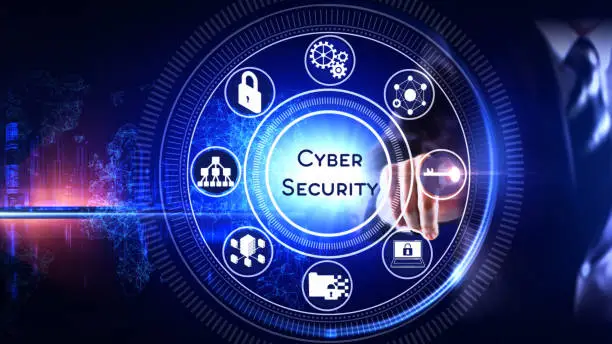Cybersecurity in the Digital Age: Protecting Data and Privacy
In today’s increasingly digital world, cybersecurity has become one of the most critical concerns for individuals, businesses, and governments. The vast growth of the internet, connected devices, and digital platforms has brought immense benefits but has also introduced significant risks to data security and privacy. With cyber threats growing more sophisticated, protecting sensitive information and ensuring privacy is paramount for maintaining trust and preventing damage to personal, organizational, and national interests.
In this article, we will explore the importance of cybersecurity in the digital age, examine key threats and challenges, and offer strategies for individuals and organizations to protect data and privacy effectively.
1. Understanding Cybersecurity and Its Importance
Cybersecurity refers to the practice of protecting systems, networks, and data from digital attacks, unauthorized access, and damage. It encompasses a wide range of technologies, processes, and practices designed to safeguard against cyber threats such as hacking, malware, ransomware, and data breaches.
The importance of cybersecurity has risen dramatically in recent years due to several factors:
- Widespread Internet Connectivity: As more devices become interconnected through the Internet of Things (IoT), the number of potential entry points for cybercriminals has increased.
- Increased Data Creation: Every day, individuals and organizations generate vast amounts of sensitive data, from personal information to financial records. The protection of this data is critical to prevent misuse.
- Rising Cyber Threats: Cybercriminals are becoming more sophisticated, using advanced techniques to exploit vulnerabilities in systems and software. This makes it more challenging to defend against attacks.
- Regulations and Legal Requirements: Governments worldwide are instituting strict regulations (such as GDPR in Europe and CCPA in California) that require businesses to secure personal data or face substantial penalties.
2. Common Cybersecurity Threats
Cybersecurity threats are evolving constantly, making it essential for businesses and individuals to stay vigilant. Here are some of the most common and dangerous cyber threats in the digital age:
a. Malware
Malware, short for “malicious software,” refers to any software designed to harm or exploit computer systems. Common types of malware include:
- Viruses: Programs that attach themselves to files and spread across systems when those files are executed.
- Trojans: Malicious software disguised as legitimate programs that trick users into downloading or running them.
- Ransomware: A type of malware that encrypts files and demands payment (usually in cryptocurrency) to decrypt them.
Malware can result in data theft, financial loss, system damage, and disruptions to operations.
b. Phishing Attacks
Phishing is a deceptive practice where cybercriminals impersonate legitimate organizations or individuals to trick people into revealing sensitive information, such as passwords, credit card numbers, or personal identification details.
Phishing attacks are often conducted through fraudulent emails, social media posts, or fake websites that appear legitimate but are designed to steal personal information.
c. Hacking and Data Breaches
Hackers use various techniques to gain unauthorized access to systems or networks in order to steal, alter, or destroy sensitive data. Data breaches, in which hackers access personal or corporate data, can have devastating consequences for individuals and businesses, leading to financial losses, identity theft, and legal consequences.
High-profile data breaches, such as the ones at Equifax, Yahoo, and Target, have exposed the personal information of millions of individuals, highlighting the severe risks posed by hacking.
d. Denial-of-Service (DoS) Attacks
In a Denial-of-Service (DoS) attack, cybercriminals overwhelm a server or network with an excessive amount of traffic, rendering it unable to function properly. This disrupts business operations and can lead to financial losses and reputational damage. Distributed Denial-of-Service (DDoS) attacks, which utilize a network of compromised devices to launch the attack, are even more damaging.
e. Insider Threats
Not all threats come from external actors. Insider threats occur when individuals within an organization, such as employees, contractors, or partners, intentionally or unintentionally expose sensitive data or compromise security. These threats can be particularly challenging to detect, as insiders often have authorized access to systems and networks.
3. The Importance of Data Protection and Privacy
Data protection and privacy have become critical issues in the digital age, as more personal and business data is shared and stored online. Protecting this data is essential not only to prevent identity theft, financial fraud, and reputational damage but also to comply with regulatory requirements.
a. Data Protection
Data protection refers to safeguarding personal data from unauthorized access, corruption, or loss. This includes using encryption, securing data backups, and ensuring that sensitive information is only accessible to authorized individuals. Data protection also involves setting up policies and procedures for data handling, retention, and disposal.
b. Privacy Protection
Privacy refers to individuals’ right to control their personal information and how it is used, shared, and stored. Organizations must obtain consent before collecting personal data, ensure that it is securely stored, and provide individuals with the ability to access or delete their data upon request. Privacy protection is particularly important in an era where data is collected across various digital platforms and devices.
With the introduction of privacy regulations like the General Data Protection Regulation (GDPR) in Europe and the California Consumer Privacy Act (CCPA) in the United States, organizations face stringent rules on how personal data must be handled. Non-compliance can result in hefty fines and legal repercussions.
4. Key Cybersecurity Practices to Protect Data and Privacy
Given the growing complexity of cyber threats, individuals and organizations must adopt comprehensive cybersecurity strategies to protect data and privacy effectively. Here are some key practices to implement:
a. Regular Software Updates
Cybercriminals often exploit vulnerabilities in outdated software to gain unauthorized access to systems. Regularly updating operating systems, applications, and security software ensures that systems are protected with the latest patches and fixes. This reduces the risk of cybercriminals exploiting known vulnerabilities.
b. Strong Password Management
Passwords are the first line of defense against unauthorized access, yet many people use weak or repetitive passwords. It’s essential to use strong, unique passwords for each account and change them regularly. Using a password manager can help users generate and store complex passwords securely.
Additionally, enabling multi-factor authentication (MFA) adds an extra layer of security by requiring users to verify their identity through more than one method (e.g., a password and a one-time code sent to their phone).
c. Data Encryption
Encryption converts sensitive data into unreadable code, ensuring that it cannot be accessed or understood by unauthorized users. Both data in transit (e.g., while it is being sent over the internet) and data at rest (e.g., stored on servers or devices) should be encrypted to maintain confidentiality and prevent data theft.
d. Backup and Recovery Plans
Cyberattacks, such as ransomware, can render critical data inaccessible. Having a robust backup and recovery plan in place ensures that in the event of a cyberattack, data can be restored quickly. Regularly backing up data to secure cloud storage or offline systems is a crucial practice for minimizing downtime and mitigating the impact of data loss.
e. Employee Training and Awareness
Since many cyberattacks rely on human error, organizations should provide regular cybersecurity training to employees. Educating employees about how to recognize phishing emails, use secure passwords, and follow best security practices can significantly reduce the likelihood of a successful attack.
f. Use of Firewalls and Antivirus Software
Firewalls act as barriers between internal networks and external threats, blocking unauthorized access. Antivirus software helps detect and remove malicious software from systems. Together, these tools are fundamental in defending against a wide range of cyber threats.
g. Privacy Policies and Compliance
Organizations should ensure that they have clear privacy policies and adhere to data protection regulations. This includes informing customers about how their data will be used, stored, and shared. Businesses should also implement data access controls to ensure that sensitive data is only available to authorized individuals and remain compliant with regulations like GDPR, HIPAA, and CCPA.
5. The Role of Emerging Technologies in Cybersecurity
As cybersecurity threats continue to evolve, emerging technologies are playing an increasing role in enhancing data protection and privacy. Some of these technologies include:
a. Artificial Intelligence (AI) and Machine Learning (ML)
AI and machine learning can be used to detect patterns and anomalies in network traffic, helping to identify potential threats in real-time. These technologies can be used for automated threat detection, vulnerability management, and predictive analytics, improving the efficiency and speed of responses to cyberattacks.
b. Blockchain Technology
Blockchain, the technology behind cryptocurrencies like Bitcoin, offers a secure and decentralized way to record transactions and store data. By providing tamper-proof digital ledgers, blockchain can help protect against fraud and unauthorized data manipulation, making it an ideal solution for securing financial transactions and sensitive data.
c. Biometric Authentication
Biometric authentication, such as fingerprint scanning, facial recognition, and retina scanning, provides an additional layer of security by ensuring that only authorized individuals can access devices and systems. Biometrics are increasingly being used for identity verification in mobile devices, banking, and secure access to corporate systems.
6. The Future of Cybersecurity
The future of cybersecurity will likely be shaped by evolving threats, increased reliance on connected devices, and advancements in technology. As the internet of things (IoT) grows and more critical infrastructure becomes digitized, the need for robust cybersecurity measures will continue to escalate.
Cybersecurity will also become more proactive, with greater emphasis on risk management, threat intelligence, and automation. Organizations will need to integrate cybersecurity into their culture, ensuring that all stakeholders are involved in maintaining secure digital environments.
Conclusion
As we continue to rely on digital platforms and technologies, cybersecurity becomes increasingly important for protecting data and privacy. With cyber threats becoming more advanced and pervasive, individuals and businesses must take proactive measures to safeguard sensitive information and comply with privacy regulations.
By adopting strong cybersecurity practices, leveraging emerging technologies, and fostering a culture of security awareness, we can better defend against the ever-evolving landscape of cyber threats. In the digital age, cybersecurity is not just a technical requirement—it is a fundamental aspect of trust, reputation, and the continued success of businesses and individuals alike.

